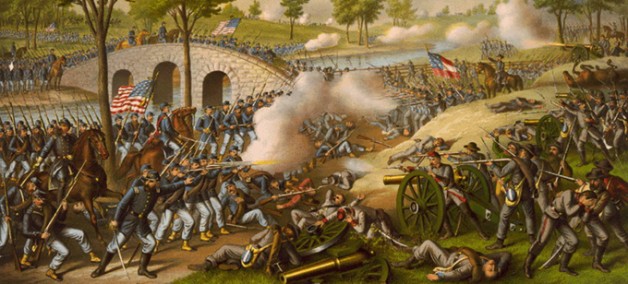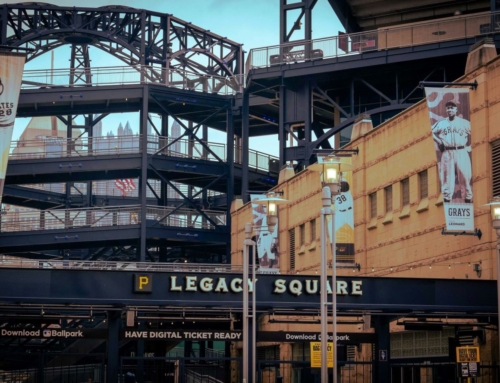The other day I hiked the Antietam battlefield, the site of the bloodiest day in American history. Yet the actual field does little justice to the horrors of its past. The whole field is nondescript, just some generic East Coast farm. There is a corn field, wooden fences, a sunken road, a small river spanned by an old stone bridge. Except for a 1970s visitors’ center and monuments covering the landscape, one would never know that anything monumental or worth visiting had ever happened there.
But then why is it worth visiting? I could have stayed much closer to home to see cornfields and old sunken roads and bridges. Of course those other bridges never were the center of an epic fight; soldiers by the thousands were not slaughtered in attacking or defending those bridges. But now all that can be seen is the bridge, not the gallantry and tragedy, not the battle itself.
I tried to imagine the battle scenes, seeing the soldiers press onto the bridge under murderous fire, pushing forward while their comrades on the hills behind cheered them on, and while their enemies on the hills ahead worked furiously to kill them. But I could image that scene at almost any antique bridge. The actual landscape is surely more accurate for such a daydream, but that’s not why Antietam itself matters. It is not monumental or worth visiting simply because it is conducive to my imagination or remembrance of the battle.
Antietam is a particular place where a particular event took place. It was not some mythic event that resides only in the mind, and can be equally applied to any place the mind pleases, but one real event that happened at one and only one place. What makes Antietam important is not my thought about it, but the reality of the event that happened there. I went to Antietam not simply to remind myself of it, for which any Civil War history book would have sufficed, but to venerate the unique place where the battle actually took place.
Veneration is the key. The bridge is not important as a bridge, but as a direct physical link to the courage and sacrifice of those who gave their lives on that bridge. That bridge is as near as I could get to those soldiers’ physical acts of courage and sacrifice. That direct link is as close as anyone can get to the actual men who fought there, and thus affords the best approach for venerating those who fought there.
Similarly, pilgrims travel to the Holy Land to be in physical contact with the places where Jesus Himself lived, died, and rose. And the same for the relics of saints—the bones of St. Dominic are as close as we can get to the physical St. Dominic, the body of the man through whom God worked great deeds.
What is important about St. Dominic is surely not his physical body. Yet, as embodied creatures even our physicality gives glory to God. The Incarnation means that God works through matter, through the particular stuff of the physical world, as this bread and this wine become the very Body and Blood of Christ. And so a nondescript bridge allows us to approach the sacrifice of our forefathers with honor and reverence. And a relic of St. Dominic allows us to venerate God’s glory residing even in the dry bones of His saints.
Image: Kurz & Allison, Battle of Antietam







